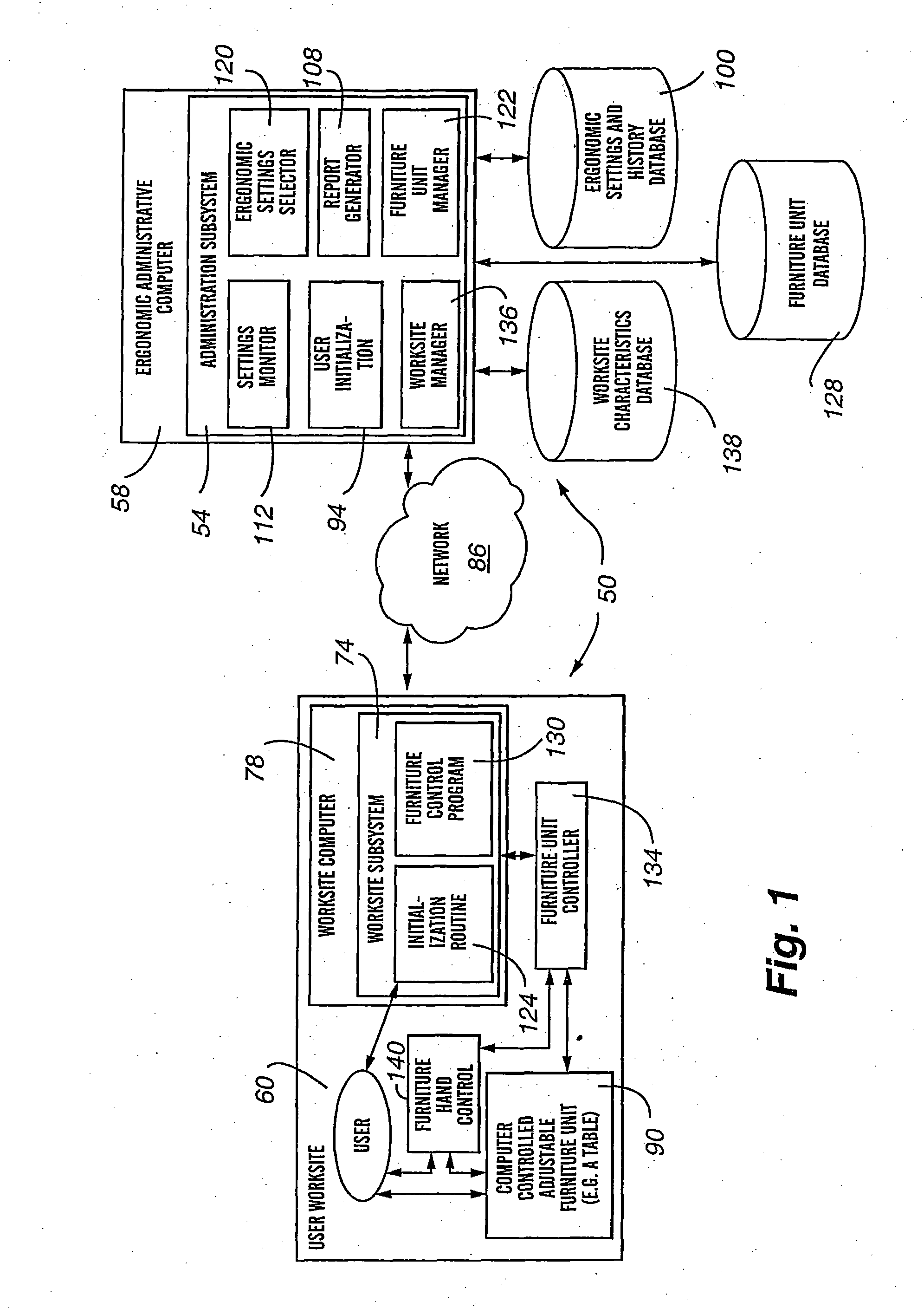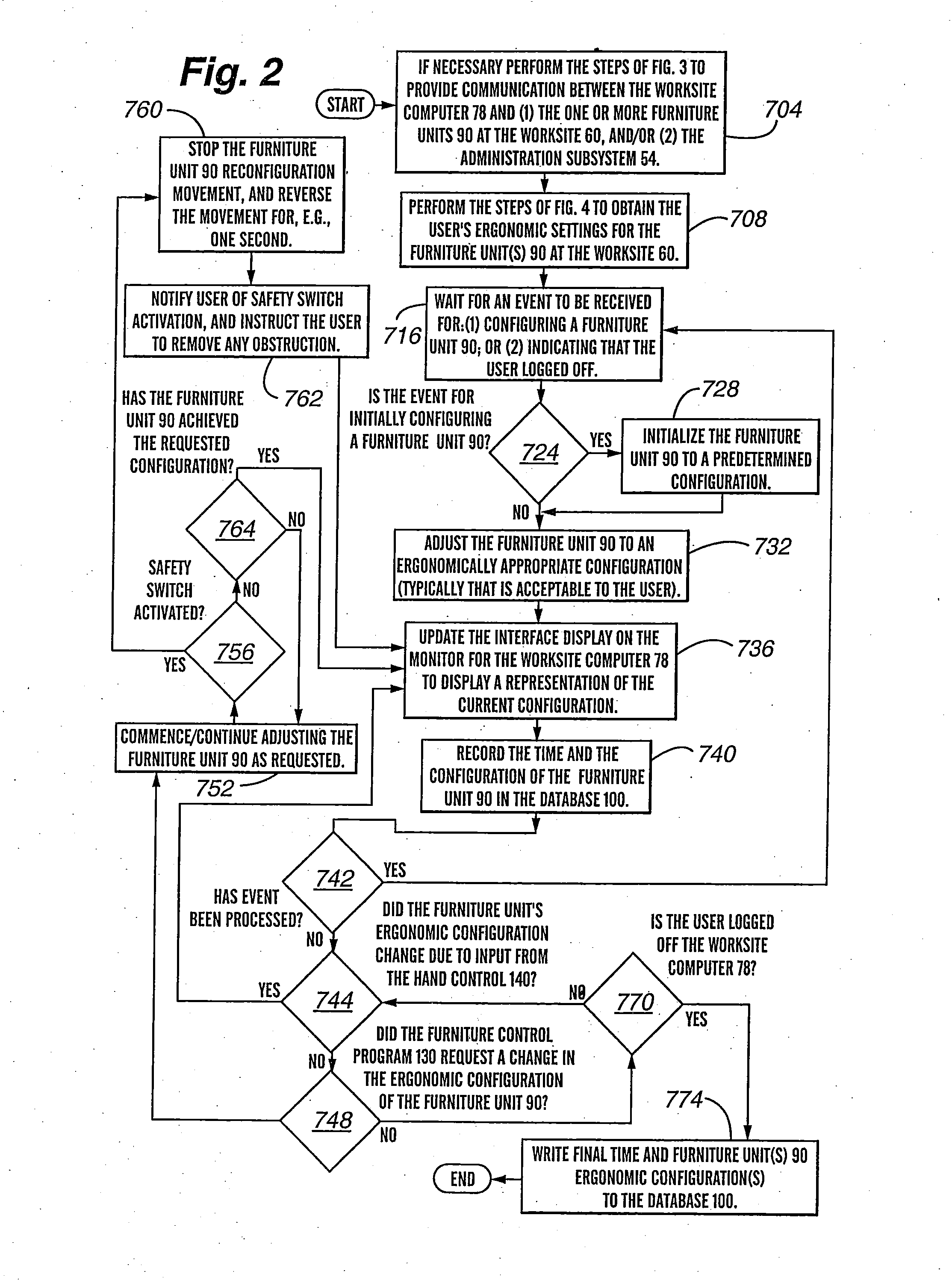Method and system for controlling ergonomic settings at a worksite
a technology of ergonomic settings and worksites, applied in the direction of computer control, process and machine control, instruments, etc., can solve the problems of increased workplace injuries, inadequate breaks, and further exacerbated injuries, so as to facilitate the adoption of, and/or optimally enhance personal comfort and productivity. , the effect of enhancing productivity
- Summary
- Abstract
- Description
- Claims
- Application Information
AI Technical Summary
Benefits of technology
Problems solved by technology
Method used
Image
Examples
Embodiment Construction
[0036]FIG. 1 shows the main components of the ergonomic control system 50 of the present invention. There are two primary subsystems of the control system 50. They are:[0037](1.1) an ergonomic administration subsystem 54 (also denoted herein as an “administrative server”) provided on a designated computer (denoted the “ergonomic administrative computer 58), wherein the administrative subsystem 54 manages, monitors, archives and creates reports related to ergonomic information received from a plurality of user worksites 60 (only one of which is shown in FIG. 1), and[0038](1.2) at each of one or more user worksites 60, a worksite subsystem 74 residing on a worksite computer 78 that cooperatively communicates, via a network 86, with the administration subsystem 54 for receiving ergonomic adjustment ranges for controlling the ergonomics of one or more computer controlled adjustable furniture units 90 (such as a table) at the user worksite 60, and for transmitting computer controlled adj...
PUM
 Login to View More
Login to View More Abstract
Description
Claims
Application Information
 Login to View More
Login to View More - R&D
- Intellectual Property
- Life Sciences
- Materials
- Tech Scout
- Unparalleled Data Quality
- Higher Quality Content
- 60% Fewer Hallucinations
Browse by: Latest US Patents, China's latest patents, Technical Efficacy Thesaurus, Application Domain, Technology Topic, Popular Technical Reports.
© 2025 PatSnap. All rights reserved.Legal|Privacy policy|Modern Slavery Act Transparency Statement|Sitemap|About US| Contact US: help@patsnap.com



